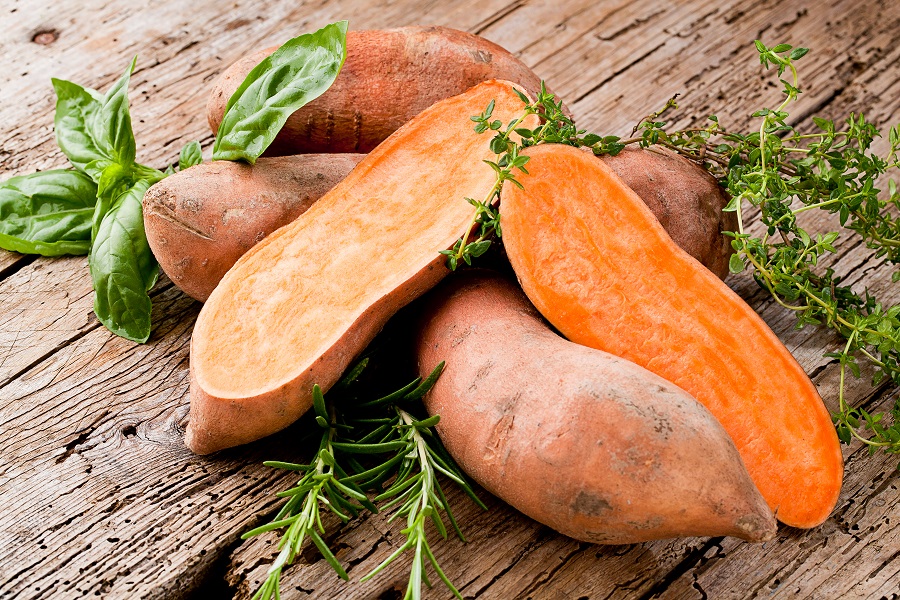-
- Take your health to the next level. Subscribe to our mailing list for your FREE eBook.“5 Ways to End Chronic Pain for Good!”

-
Latest Articles:
- • Add These 10 Immune-Boosting Foods to Your Fall Diet •
- • Keep Your Skin Healthy and Glowing with these Fall Skincare Tips •
- • Beat End of Year Burnout with these Fall Self-Care Rituals •
Hours
Monday8:30am - 4:30pmTuesday8:30am-4:30pmWednesday8:30am-4:30pmThursday8:30am-4:30pm
- Testimonials
“Dr Michele knows how to diagnose and heal you. She has a variety of methods she can utilize to work with your mind and body to produce the healthiest you!”
~ Carol Prokop. Also posted on Google Reviews!
I needed relief from chronic pain in my back, hips, and sciatic nerve. I have had these problems for a number of years. My doctors used physical therapy, and pain medication. I can no longer take anti-inflammatory medication. My acupuncture treatments have helped a lot. I can now relax, and I feel almost pain free. It has helped my attitude also. My activities have improved. Michele is a wonderful person, caring, compassionate, and an excellent acupuncture therapist!
C.T.
After two back surgeries, I was still having a great deal of pain. A friend told me acupuncture helped him with shoulder pain. I was a little skeptical but decided to give it a try. I didn’t want to stay on Percocet pain killers forever. After receiving acupuncture treatments, I was amazed how it helped with the pain. It isn’t gone but it is at least bearable. I only occasionally need to take a pain killer, and that is when
... Read more »A letter as copied to her doctor: Ms. Michele Arnold has been working with me since I begun experiencing hot flashes and has been able to manage them for me. I know it works because I took a five week hiatus from acupuncture treatments and experienced hot flashes so severe that I actually did not want to live. With four treatments I was back to feeling great with only a very occasional minimal hot flash. Acupuncture is relaxing and uplifting.
... Read more »Acupuncture has helped relieve so many symptoms, its hard to list them all. I have MS (multiple sclerosis) and acupuncture has helped with my vision, balance, and overall energy level. It also completely addressed the pain from a torn shoulder rotator cuff. Thank you Michele!
Wendy Harrison
Digestion
Three Naturally Probiotic Foods that You May Not Know About
Three Probiotic Foods
Eating or drinking probiotic food as soon as possible after having diarrhea can help prevent future cases of diarrhea by introducing healthy bacteria back into the digestive system. It can also help prevent adverse reactions to antibiotics should you need to take them.
Probiotics will help with IBD, IBS, GERD, leaky gut, and other digestive disorders.
The root cause of many digestive problems is a lack of healthy gut bacteria, enzymes, or stomach acid.
The initial cause could be antibiotic use, poor diet, infection from a virus, bacteria, fungi, yeast, or candida. If you are beginning the intake of probiotics or probiotic foods begin slowly. You may feel adverse healing reactions from the die-off of bacteria, virus, yeast, and fungi, and other toxins released into your blood stream. These toxins must be expelled via sweat, breathing, urine, or the stool.
That is why rice congees, and green veggie smoothies are so helpful. They help promote toxin release as well as probiotic growth.
There are five foods you may not know about that are naturally probiotic. You may want to integrate them into your diet.
- Kefir. This is a milk-based food. However, like real butter, it does not have lactose. Studies indicate that it even helps people improve their digestion of lactose because kefir contains at least 3 times more live bacteria than yogurt. It is the bacteria, and digestive enzymes that help your body break down lactose sugars. Everyone reacts differently to kefir, so play around with your serving amounts to see what works for you. Begin slowly with 5-10 oz. Slowly increasing daily amount to include 1-2 8 oz. servings. Of course, if you have a milk allergy you would avoid drinking kefir and all milk products.
- Parmesan cheese. Yes, I said that right! Hard-aged cheeses are naturally rich in healthy gut bacteria. So sprinkle some on your food, and enjoy.
- Sauerkraut. Eat only the raw, organic kind. You can make your own, or purchase from your local health foods store. I believe Trader Joe’s, and Costco have good quality sauerkraut. It should be crunchy, and fresh tasting. You should drink the juice as well. Don’t let any of it go to waste. Like kefir, begin slowly with small amounts until your body gets used to digesting it. If you don’t eat a particular type of food group, you won’t have the enzymes necessary to break it down. That is why traveling, and eating new foods can sometimes cause stomach upset. Sauerkraut makes a great appetizer, or side-dish.
Here is one recipe you can try. If you do, please tell me what you think?
Probiotic Raspberry Drink
- 1 Cups plain kefir or sauerkraut juice
- 1 mangos, skin and pit removed
- 1/2 Cup fresh or frozen raspberries
- 1.5 Cups kale, stems removed and chopped roughly
- Add all ingredients to a blender, blend until smooth about 2 minutes.
- Drink and enjoy!
This post is an excerpt from Dr. Michele Arnold-Pirtle’s book, It’s All About Your Gut!
Buy your copy from www.lulu.com/shop enter in the title and purchase.
I appreciate comments, questions, and testimonials! Please like and share this post.
Dr. Michele Arnold, Doctor of Acupuncture Medicine.
Happy Easter and an abundance in health and happiness

Wishing you and your family a wonderful Easter weekend! As always I wish you abundance in health and happiness.
Should you over indulge in a rich holiday meal, or taste too many sweet treats and candy I wanted to give you a few healthy recipes you can try to offset the sugar and fat. This may also help offset the guilt as well!
Enjoy one of these at one of your mealtimes, or as a breakfast. These smoothies make enough to share. You can always cut them in half.
Metabolism Boost
Add to blender in this order
- 3 cups distilled water
- 1-inch piece of skinned ginger root
- juice of 1 lemon
- 2 pears pit removed.
- 2 cups fresh or frozen raspberries
- 2 stalks of celery, trimmed
- 3 cups of kale, stems removed
The skinny Minnie
Add to blender in this order
- 3 cups distilled water
- juice of 1 lemon
- 2 peaches pits removed
- 2 cups fresh or frozen strawberries
- 1 cucumber cut into chunks
- 3 cups kale, stems removed
- handful of parsley
These are only a few examples of ways you can use food as medicine! If you would like more ideas, or you would like to be able to have ongoing support directly from me, Dr. Michele join the locals movement Living Well With Dr. Michele at
www.livingwellwithdrmichele.locals.com
I am here for you for you when you need acupuncture care for pain relief, digestive support, and to ease anxiety and stress. Make your appointment now Acusimple | Online Access
Happy Easter,
Dr. Michele Arnold
Five Amazing Reasons to use Oregano for Digestive Health

Did you know there are at least five amazing reasons to use oregano to support your digestive health?
Oregano is mainly known for imparting its flavor into our culinary dishes especially Mediterranean recipes.
For medicinal uses the fresh or dried leaves can be used as a tea, as a tincture, or as an essential oil.
Because the digestive system is linked to our immune system, and our ability to combat microbes such as viruses, bacteria, yeast, fungi, and parasites this is an herb that is essential to keep on hand when needed, or use as a protectant for ten days, then take ten days off switching to another favorite herb. This keeps your body from developing an aversion, or becoming too accustomed thus ignoring its effects.
Here are my reasons I love oregano!
- Antiviral and immune boosting properties. It is powerful in stimulating the body’s immune system to produce white blood cells, which defend us from viruses, bacteria, and fungi.
- Contains Vitamins A and C, and other antioxidant compounds known to help boost our immune system.
- Potent against yeast and fungi. It inhibits the growth of Candida from its Carvacrol and thymol compounds. You can use the tea as an external wash. Diluted oregano oil can be applied to toenails, and feet for athlete’s foot and toenail fungus, and on the skin for ringworm.
- Anti-inflammatory effects, and antioxidants benefit our skin. The skin and digestive are connected that when we have constipation, infection, or inflammation in our gut it affects the appearance of our skin with possible rashes, blemishes, wrinkles, dryness, or infections. People with inflammatory bowel disease or irritable bowel disease often have bumps, blemishes, rashes, or irritations on their skin. Make an herbal tea using the fresh leaves of oregano and drink daily for ten days. Then take ten days off, and repeat.
- Benefits the heart and cardiovascular system. Our heart and blood circulation is necessary to bring needed nutrients throughout our body including the digestive tract, and to remove waste products.
How to use oregano…
- Place some leaves in your tea cup and bruise with a spoon or use a mortar and pestle. You can use dried leaves, but the fresh leaves will have more essential oil intact. Pour boiling water over, let steep 2-5 minutes and enjoy!
- To use it as a wash, let the tea cool, and don’t add any honey, or sweetener. Apply to affected area.
- Using the essential oil of oregano: Be sure to dilute with a carrier oil like fractionated coconut oil, or almond oil. Add a few drops of oil to 1 teaspoon of the carrier oil. Apply to affected area avoided mucus membranes.
How have you used oregano?
Leave your reply or questions below.
Understanding Your Body Constitution to Conquer Inflammatory Bowel Disease part 1
Understanding Your Body Constitution for IBD-Part 1.
Stay-tuned for Part 2-What is a healthy constitution, and learn about the most common constitutional patterns for IBD.
Conquer your abdominal pain, diarrhea, and fatigue.

 Loading...
Loading...
Wonderful Things About Sweet Potatoes

I love sweet potatoes made any which way. My favorite is to bake them in the oven, and slice open and season with salt, pepper, parsley, and a little real butter.
Did you know about the wonderful health benefits of a sweet potato?
Yes, they are a starchy root vegetable. Starchy veggies have been given a bad wrap lately, which has impacted our health in general by not eating these types of foods in our regular diet.
Anyone suffering from inflammatory bowel disease or irritable bowel disease should pay attention here!
Starchy veggies have soluble fiber, which soothes and regulates the digestive tract, stabilizes the intestinal contractions, and normalizes bowel function from either extreme. So, soluble fiber prevents and relieves both diarrhea and constipation while also preventing the violent and irregular spasms that result in the lower abdominal cramping pain that cripples so many people with IBD, or IBS.
A Balanced meal includes both insoluble fiber like whole grains, broccoli, fruit with skin, seeds along with soluble fiber foods like a sweet potato.
Nutrition of a Sweet Potato:
- Rich in Beta-carotene-helps reduce risk of stroke or heart attack by 20-40%.
- Low in calories-130 calories per medium sweet potato
- Fat free
- Vitamin C-half of your day’s RDA value
- Vitamin A-necessary for healthy nerve function
- Potassium-great for blood pressure
- Natural detoxifying by helping your body expel excess heavy metals and toxins.
- Great in a detoxifying rice congee (porridge).
- My recipe you can find in my book, “Ancient Healing for Modern People, Food, Herbs, & Essential Oils“.
- Anticancer, anti-obesity, and antiaging!
So, eat your sweet Potatoes to enjoy all of the wonderful things!
Dr. Michele Arnold

